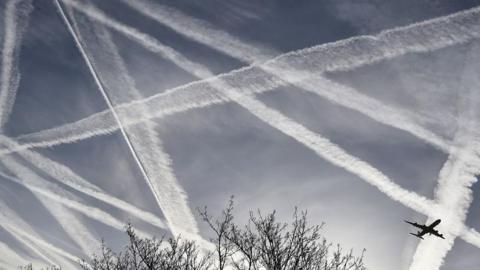The COP event aims to draw attention to the fact that relatively simple changes to aviation practice could eliminate much of the warming impact of these trails.
According to the Transport & Environment study, some 80% of the warming associated with contrails is generated by just 3% of flights.
Tweaking the flight paths of a handful of aircraft could reduce contrail warming by more than half by 2040, at a cost of less than £4 per flight.
Geography and a flight's latitude have a strong influence on whether a contrail is warming. Flights over North America, Europe and the North Atlantic region accounted for more than half of global contrail warming in 2019, the report said.
Time of day also influences the climate effects of contrails. Those formed by evening and night flights have the largest warming contribution. Seasonality is also important - the most warming contrails tend to occur in winter.
“Planes are already flying around thunderstorms and turbulence areas,” Mr Lopez de la Osa said.
“We will need to add one more constraint to flight planning, which is avoiding areas of contrail formation.”
“Of the climate solutions which are being discussed at COP29, it's arguably one of the simplest ones.”
The researchers are hoping that by holding this event at COP they will spread awareness of the problem and the solutions.
They point to the huge amounts of money and research going into developing sustainable aviation fuels.
They believe that tackling contrails could achieve a major win for the climate, at a fraction of the cost.
